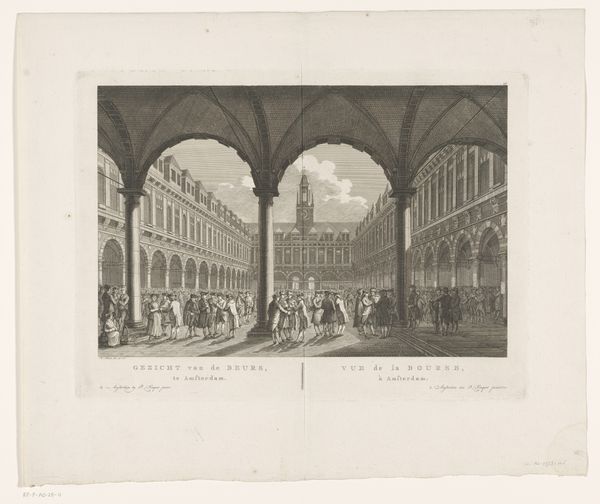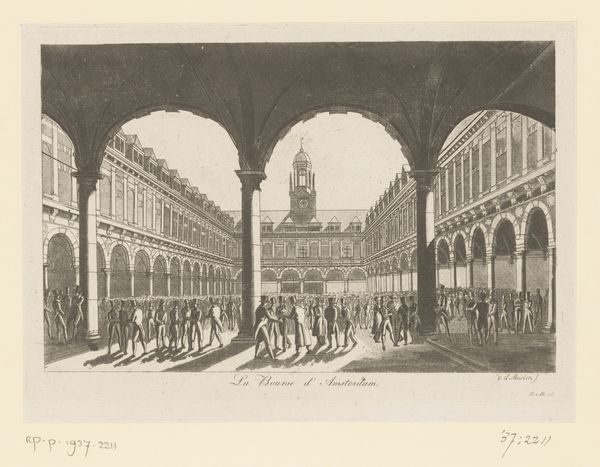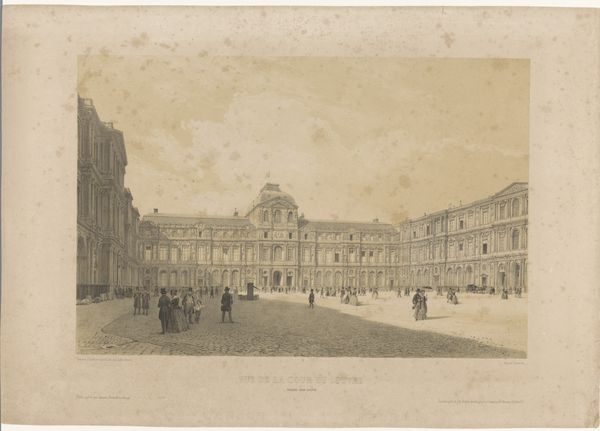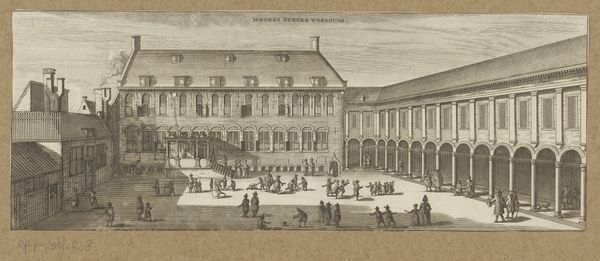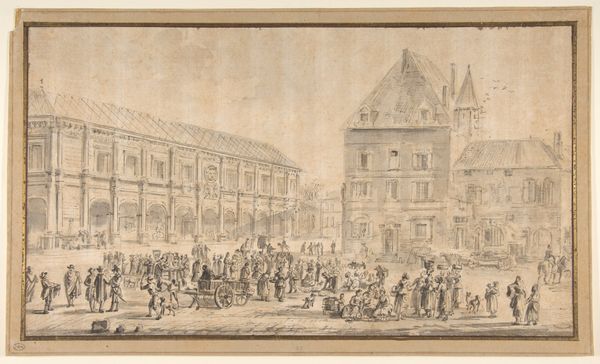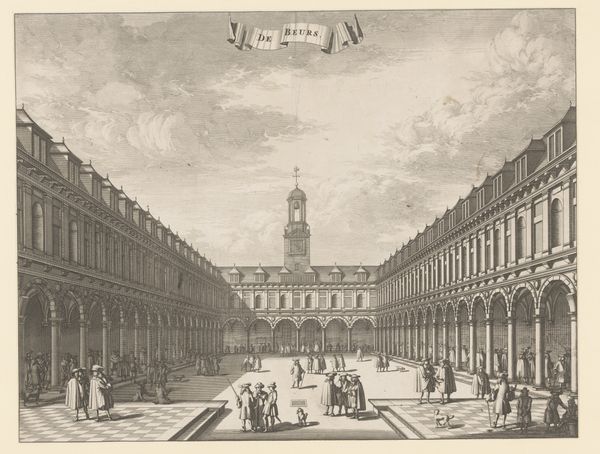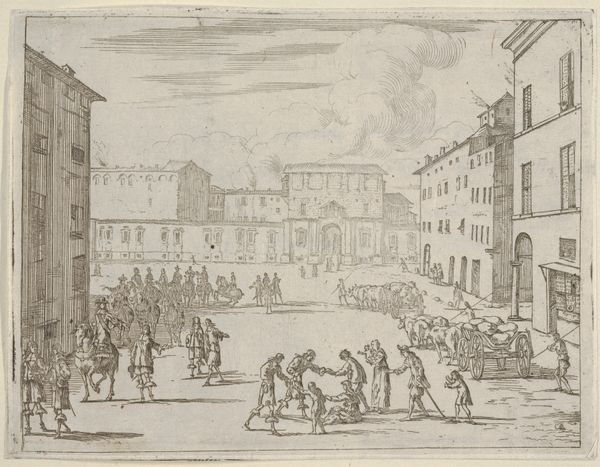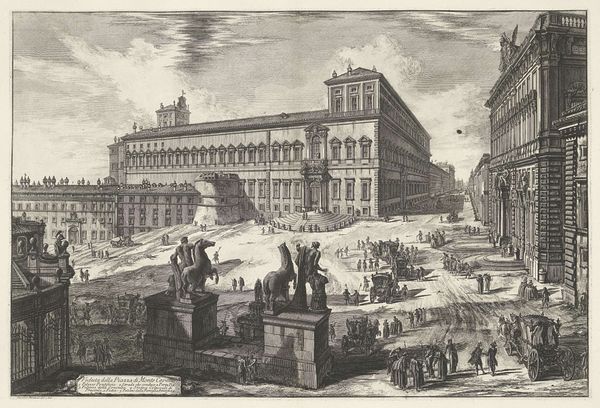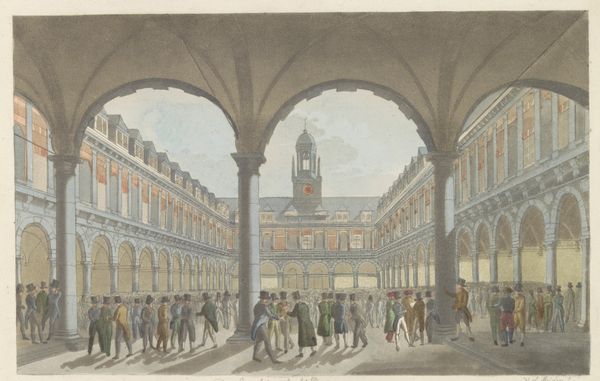
#
aged paper
#
toned paper
#
light pencil work
#
old engraving style
#
etching
#
personal sketchbook
#
pen-ink sketch
#
pen work
#
sketchbook drawing
#
sketchbook art
Dimensions: height 188 mm, width 240 mm
Copyright: Rijks Museum: Open Domain
This print, “Beurs,” was made by Johann David Schleuen around the mid-18th century, using etching on paper. The printmaking process involves coating a metal plate with a waxy, acid-resistant substance, then scratching an image into it. The plate is dipped in acid, which bites away the exposed lines. Finally, ink is applied and the plate is pressed onto paper, transferring the image. This technique allowed for relatively easy reproduction and dissemination of images, making them accessible to a wider audience. Looking closely, you can see the linear quality of the etching. The image depicts a bustling scene, likely a merchant exchange. The quality of line determines the appearance of the artwork as it provides a tremendous amount of detail. The architecture's imposing presence speaks to the importance of trade and commerce in society at the time. The very act of printing and distributing images like these was itself part of the burgeoning capitalist system. It allowed for the exchange of information, ideas, and representations of wealth. By considering the material and process of printmaking, we can see how this image is deeply embedded in the economic and social context of its time, connecting artistic practice to wider issues of labor and consumption.
Comments
No comments
Be the first to comment and join the conversation on the ultimate creative platform.
